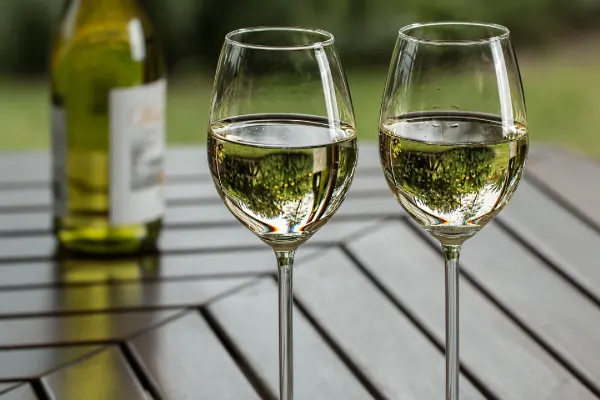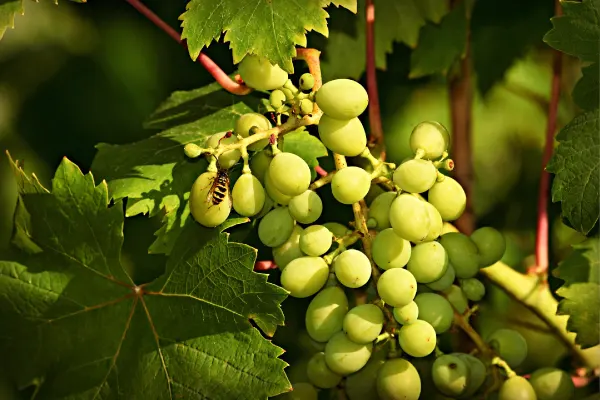Most people think that white wine is only ideal for consumption in the most tropical climates or in the summer, but unlike other wines, it can be combined and drunk at any time as long as it is well chosen.
It is usually made from white grapes, but it can also be produced from red grape varieties, using a very soft pressing and avoiding the color extraction from the skins. The color of white wine varies widely, from citrus to golden yellow.
History of White Wine
It is not clear when white wine started to be produced. It is only known, through artifacts and scriptures, that at least 7500 years ago the wine came from where Iran is located today.
It is a type of wine that was always very present in the Middle East, but not only there; in ancient Greece this wine was already produced, so much so that Hippocrates, popularly known in history as the “King of Medicine”, used this wine to heal his patients.
In the middle of the 16th century, white wine started to be produced worldwide and remains one of the most popular types of wine consumed today.
Characteristics of White Wine

It is normal for a type of wine to have sub-types. In the case of white wine, this sub-division is made according to a set of characteristics such as lightness, aroma and body. There are then 3 sub-categories in white wines: light, aromatic and full-bodied.
Light white wine – it is characterized by its acidity, aroma of citrus fruits and usually has a low alcohol content. As the name says, they are light and mineral wines.
Aromatic white wine – they are intensely perfumed wines with aromas of sweet fruits, vibrant, fresh and very juicy flavor. They can have very sweet aromas if the grapes used are very ripe, but they do not have high levels of sugar.
Full-bodied white wine – they are usually more complex white wines, with a good presence of oak and good greasiness.
Durability of White Wine after opening
It is normal for any wine to have lost some of its characteristics the day after the bottle is opened, due to the contact it had with air. Usually, white wine tends to last in the refrigerator for up to 3 days after opening and, the higher the acidity, the longer it lasts. However, it is important to keep the bottle closed with its own stopper, in order to reduce the contact between oxygen and the wine.
Most used grape varieties in White Wine

The vast majority of consumers may think that white wines are made only with white grapes, but the truth is that they can also be produced from red grape varieties.
The color of white wine varies a lot: if we have a colorless wine it means it has had a bleaching treatment. The colors vary between citrus, as is the case of whites from the Vinho Verde region, and golden yellow, as is the case for wines aged in wood or with skin maceration.
The color of this wine is obtained thanks to the natural pigments found in the skin of the grapes. To extract this pigment, the grape’s must must be in contact with the skins during the fermentation process. The contact time will define how intense the color of the wine will be and, in the case of white wine, that contact is almost non-existent.
There are countless number of white grape varieties that are used to make white wine, it is estimated that there are more than 10,000 spread throughout the world.
Worldwide, the best known are: Chardonnay, Cheninc Blanc, Gewurztraminer, Pinot Gris / Grigio, Riesling, Sauvignon Blanc, Sémillon, Torrontés and Viognier. In Portugal, where our Velvet Bull project was born, the best-known white grape varieties are: Alvarinho, Fernão Pires, Arinto and Encruzado.
Ideal temperature for drinking White Wine
Generally speaking, white wines should be served between 8º and 12ºC but, to be more specific, the temperature can also be defined by the type of white wine to be served:
Light or Aromatic – 8º to 10ºC
Full-bodied – 10º to 12ºC
Harmonization of White Wine with Food

Harmonizing a wine is not an easy task, since it is necessary to know its characteristics in order to be able to combine it with the characteristics of the food and obtain the best of both worlds.
White wine is divided into three subcategories, as explained above, and each category should be harmonized differently :
Light – it should be drunk young and fresh. They are perfect for the summer, can be drunk as an aperitif, with salads, fish or seafood dishes.
Aromatic – perfect with seafood, fish, white meats and salads, since they are wines where white flowers and fresh fruits such as apple, pear, pineapple, melon and peach predominate.
Full-bodied – it goes well with foods with strong flavors, such as a pasta dish with a stronger sauce, fish baked in the oven, and even red meats.
Click here to buy and taste a great variety of white wines.
 Portugal
Portugal Spain
Spain France
France Germany
Germany United Kingdom
United Kingdom Monaco
Monaco



